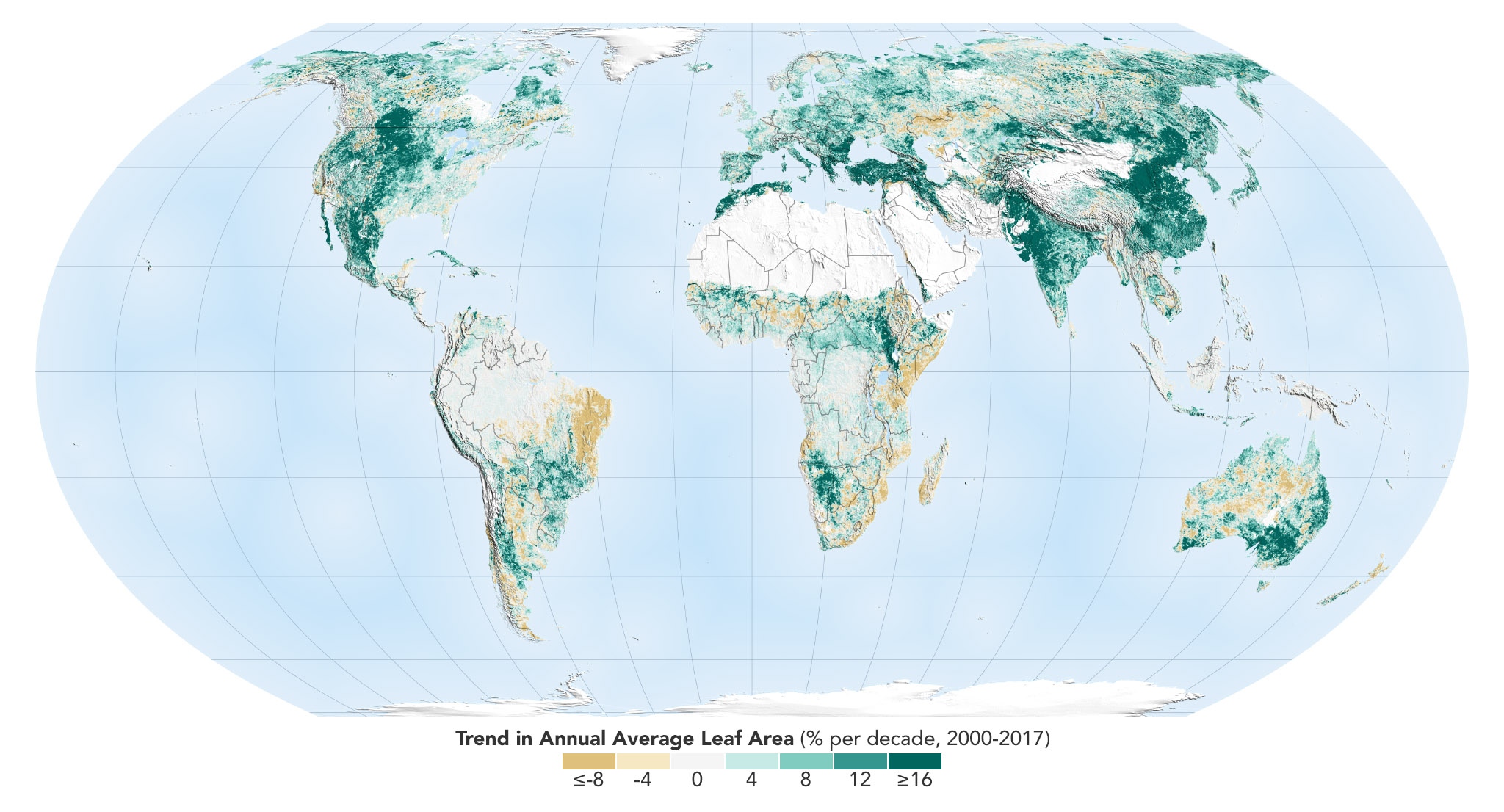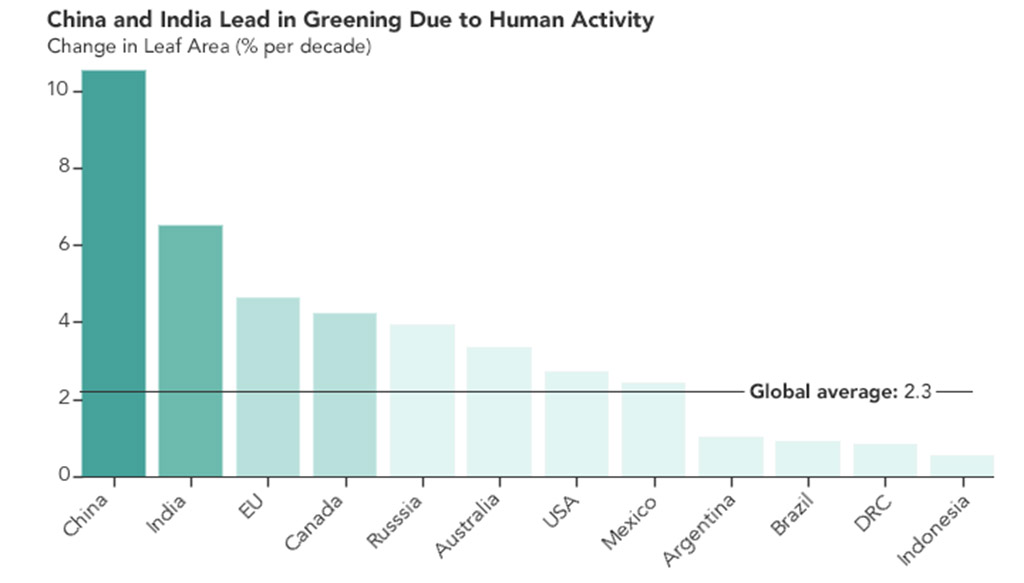It’s a plain fact that almost all of the recent global spike in carbon dioxide emissions can be sheeted home to two main offenders: China and India. China is also responsible for a recent resurgence in ozone-destroying gases. Almost all of the plastic polluting our oceans originates in Asia. China’s problems with pollution – smog and toxic heavy metals – are legendary.
But, for once, there’s some good environmental news to report from China and India. Once again, the environmental benefits of human prosperity are proven.
NASA has some good news, the world is a greener place today than it was 20 years ago. What prompted the change? Well, it appears China and India can take the majority of the credit.

In contrast to the perception of China and India’s willingness to overexploit land, water and resources for economic gain, the countries are responsible for the largest greening of the planet in the past two decades. The two most populous countries have implemented ambitious tree planting programs and scaled up their implementation and technology around agriculture.
In other words, they’re just repeating what Western countries have been doing for the past century and more. England is reaching forest cover levels not seen since the Domesday book. Europe and the North Americas are doing the same. But it is China and India who are going global greening gangbusters.
Both China and India went through phases of large scale deforestation in the 1970s and 80s, clearing old growth forests for urban development, farming and agriculture. However, it is clear that when presented with a problem, humans are incredibly adept at finding a solution. When the focus shifted in the 90s to reducing air and soil pollution and combating climate change the two countries made tremendous shifts in their overall land use.
forbes.com

While some of the global greening can be attributed to a warmer, wetter, carbon-rich environment, that’s only part of the story. The fact that the strongest greening is defined by national borders suggests that human activity is a decisive factor.
Despite the green-left’s romanticised notions of primitive life, the truth is, as Jared Diamond puts it, that tribal people damage their environments and make war. People living in pre-industrial poverty are simply too busy trying to feed themselves to bother luxuries like environmentalism. But, as China and India turn to capitalism to lift many of their people out of poverty and into the middle class, a new green revolution is taking place.
China’s outsized contribution to the global greening trend comes in large part (42%) from programs to conserve and expand forests. These were developed in an effort to reduce the effects of soil erosion, air pollution and climate change. Another 32% there – and 82% of the greening seen in India – comes from intensive cultivation of food crops.
Land area used to grow crops is comparable in China and India – more than 770,000 square miles – and has not changed much since the early 2000s. Yet these regions have greatly increased both their annual total green leaf area and their food production. This was achieved through multiple cropping practices, where a field is replanted to produce another harvest several times a year. Production of grains, vegetables, fruits and more have increased by about 35-40% since 2000 to feed their large populations.
nasa.gov
The great Norman Borlaug ushered in the first “green revolution” by using agricultural technology to enable crop yields per acre to soar. Environmentalists wring their hands and moan about “industrialised agriculture” – even though it is the very thing saving the environment. When people grow rich by producing more food using less land, they can suddenly afford to care about the environment.








